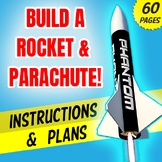66 results
Astronomy lectures for Microsoft Word
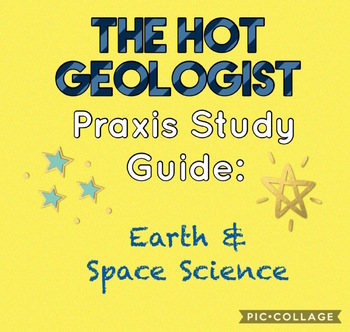
Earth Science Praxis Exam Study Guide
Need to get the extra certification to become more qualified? Say no more!
I made this study guide based on the PDF from the Praxis site: https://www.ets.org/s/praxis/pdf/5571.pdf
Includes all test specifications and sections needed to know for the exam!
> I passed for my state standards from studying this study guide I made! Good luck, studying one page a day helps!
MY STUDY TIPS:
• Study every day.
• Study a page a day, and also go back to old material to refresh.
• Pick a time of
Subjects:
Grades:
7th - 12th
Types:
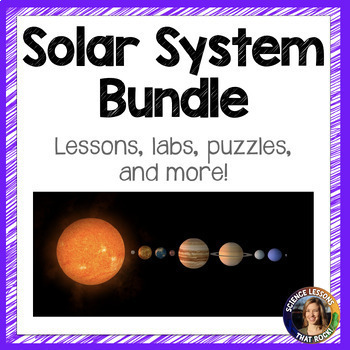
Solar System Bundle
This is a growing bundle used to teach about our solar system. Bundle and save! You will be able to download any additional lessons that are added in the future for free. Be sure to follow my TpT store by clicking on the green "follow me" next to my seller picture to receive notifications of new products and upcoming sales. Don't forget to leave feedback to earn TpT credits that can be used for future purchases! Want free tips and resources sent to your inbox once a week? Subscribe to my newslet
Subjects:
Grades:
8th - 10th
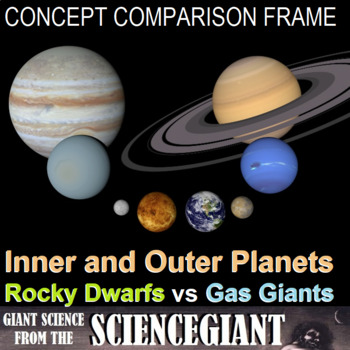
Concept Compare: The Inner and Outer Planets (rocky dwarf vs. gas giant)
How are the other planets of our solar system different from Earth? This Concept Comparison Frame helps students contrast the Inner and Outer Planets, with the terrestrial rocky dwarfs of Mercury, Venus, Earth and Mars on the one side, and jovian gas giants of Jupiter, Saturn, Uranus, and Neptune on the other. The Concept Comparison Routine is used help compare and contrast key concepts. Specifically, students use like and unlike characteristics and categories shared and not shared by two or mor
Subjects:
Grades:
6th - 12th
NGSS:
MS-ESS1-3
Also included in: StayGiant Earth Science Bundle: Astronomy (space exploration)

Concept Compare: Kepler's (and Newton's) Laws of Planetary Motion for Orbits
This concept comparison is between: Kepler's Laws of Planetary Motion, and how they relate to Newton's Laws of Motion and the Law of Universal Gravitation. Bring a calculator!The Concept Comparison Routine is used help compare and contrast key concepts. Specifically, students use like and unlike characteristics and categories shared and not shared by two or more concepts to better understand the overall concept. Students taught using the Content Enhancement routines earned higher total test scor
Subjects:
Grades:
7th - 12th, Higher Education
NGSS:
HS-ESS1-4
Also included in: StayGiant Earth Science Bundle: Astronomy (space exploration)
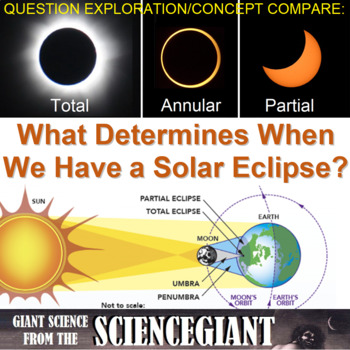
Concept Compare and Question Explore: Solar Eclipse on January 14, 2029
Why do eclipses happen? Why doesn't every new moon result in a solar eclipse? This question exploration helps students explain What determines when do we have a solar eclipse? It also includes: a concept comparison of three solar eclipses visible in the United States: a partial eclipse on Wednesday, January 26, 2028 and Sunday, January 14, 2029; an annular eclipse on Thursday, June 11, 2048; and a total solar eclipse of Wednesday, March 30, 2033 (only visible in Alaska. For the lower 48 states,
Subjects:
Grades:
7th - 10th
NGSS:
HS-ESS1-4
, MS-ESS1-1
Also included in: StayGiant Earth Science Bundle: Astronomy (space exploration)
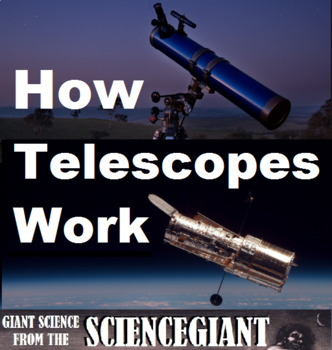
Concept Compare: Great Galileo! How Telescopes Work (refractor,reflector,radio)
What are telescopes and how do they work? This Question Exploration helps Ss explain how do different types of telescopes work. The Concept Comparison contrasts refracting, reflecting and radio telescopes. And there is a Frame reviewing the astronomical accomplishments of the first champion of telescopes -- Galileo Galilei. Magnifico!Framing Routines and Question Exploration Routines are instructional methods that teachers can use to help a diverse student population understand a body of content
Subjects:
Grades:
7th - 10th
NGSS:
HS-PS4-5
, MS-PS4-2
, HS-PS4-1
Also included in: StayGiant Physics Bundle: Optics

Question Exploration: What Causes Seasons and the Solstices?
What Causes Seasons and Solstices? This question exploration helps students explain how the Earth has seasons because its axis is tilted. Earth rotates on its axis as it orbits the Sun, but the axis always points in the same direction, creating a North Pole!The resource also includes reading excepts:"The Measure of Eratosthenes" by Carl Sagan. From the first episode of Cosmos, Sagan easily proved the Earth was a sphere using the summer solstice, the shadows of some sticks, a piece of cardboard,
Subjects:
Grades:
7th - 12th
NGSS:
HS-ESS2-4
, MS-ESS2-6
, MS-ESS1-1
Also included in: StayGiant Earth Science Bundle: Astronomy (space exploration)
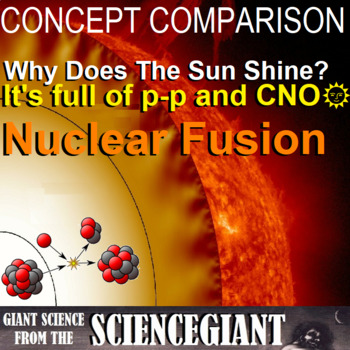
Concept Compare: Why Does the Sun Shine? Thermonuclear Fusion! (p-p and CNO)
This Concept Comparison of Thermonuclear Fusion contrasts proton-proton (p-p) chain reactions, and the "cold" carbon-nitrogen-oxygen (CNO) cycles. Help Ss communicate scientific ideas about the way stars produce elements over their life cycle. Emphasis is on the way nucleosynthesis, and therefore the different elements created, varies as a function of the mass of a star and the stage of its lifetime. As cosmologist Carl Sagan famously said, “We are made of star stuff.” And we literally are! We a
Subjects:
Grades:
8th - 12th, Higher Education
NGSS:
HS-PS1-8
, HS-ESS1-3
, HS-ESS1-1
Also included in: StayGiant Earth Science Bundle: Astronomy (space exploration)
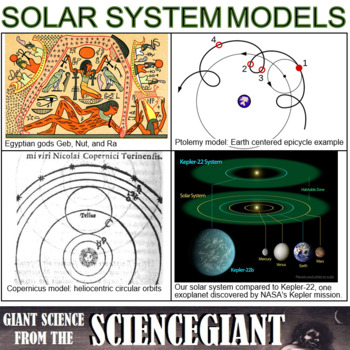
Concept Comparison and Question Exploration: Models of the Solar System
What are historical models of the solar system? This Question Exploration and Concept Comparison helps Ss contrast geocentric model painted in ancient temples, to heliocentric models photographed in modern telescopes. Question Exploration Routine is an instructional methods that teachers can use to help a diverse student population understand a body of content information by carefully answering a critical question to arrive at a main idea answer. Students taught using the question exploration r
Subjects:
Grades:
7th - 10th
NGSS:
HS-ESS1-4
, MS-PS2-4
, MS-ESS1-2
, HS-PS2-4
Also included in: StayGiant Earth Science Bundle: Astronomy (space exploration)
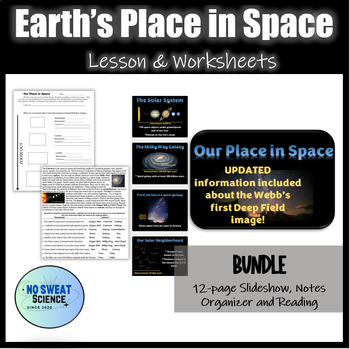
Earth's Place in Space Astronomy Worksheet and Slideshow Presentation Bundle
A collection of a PowerPoint, notes organizer worksheets and a reading reinforcement worksheet all included to teach your students about our unique place in space! ✔️Updated information about the James Webb's first Deep Field image!✔️Solar system crossword included as a bonus!
Subjects:
Grades:
4th - 9th
Types:

Question Exploration: What Are the Solar Activity Sunspot Cycles?
What are the solar activity sunspot cycles? Sunspots increase and decrease through an average cycle of 11 years. This Question Exploration helps Ss explain how the spotless Sun turns dark, releasing solar flares and coronal mass ejections (CMEs).Question Exploration Routine is an instructional methods that teachers can use to help a diverse student population understand a body of content information by carefully answering a critical question to arrive at a main idea answer. The Concept Comparis
Subjects:
Grades:
7th - 12th, Higher Education
Types:
NGSS:
HS-ESS1-1
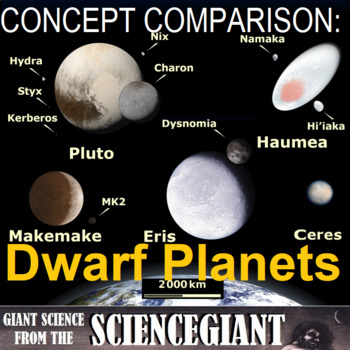
Concept Comparison: Dwarf Planets (Ceres, Pluto, Huamea, Eris, and Makemake)
This Concept Comparison Frame contrasts the dwarf planets CPHEM (Ceres, Pluto, Huamea, Eris, and Makemake). These round worlds orbit the Sun but didn't completely clear their neighborhood (one is in the asteroid belt and the rest are in the Kuiper Belt). It helps Ss explain how these rocky and icy minor planets are just as important to understanding the solar system as gas giants. The Concept Comparison Routine is used help compare and contrast key concepts. Specifically, students use like and u
Subjects:
Grades:
6th - 12th
NGSS:
HS-ESS1-4
, MS-ESS1-3
Also included in: StayGiant Earth Science Bundle: Astronomy (space exploration)
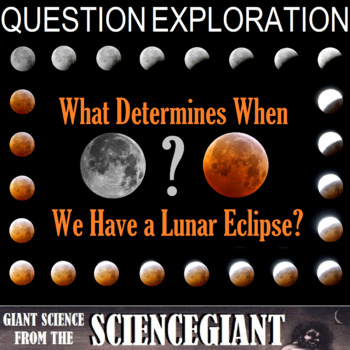
Concept Compare and Question Explore: Lunar Eclipse of 14 March 2025
Why doesn't every full moon result in a lunar eclipse? This question exploration helps Ss explain what determines when the Moon will be eclipsed, as on Friday, March 14, 2025 at 3 AM Eastern? Resource also includes a concept comparison of solar and lunar eclipses; and types of eclipses (total, partial, penumbral (lunar), and annular (solar). Actitivies and assessments for this resource include:a whole class formation activity to make a human model of a lunar eclipse, a math activity to make an u
Subjects:
Grades:
5th - 12th
NGSS:
HS-ESS1-4
, MS-ESS1-1
Also included in: StayGiant Earth Science Bundle: Astronomy (space exploration)

Question Explore: What Methods Measure Ultra Space Deep Distances? Parallax
This Question Exploration asks the Essential Question about cosmic distances: What Methods Do Astronomers Use to Measure Ultra Deep Space Distances? (from radar and parallax, to standard candles and Tully-Fisher Relationship used to measure distances to galaxies).Included are two activities on the scale of the universe for student assessment to be used as a warm up or after class review. The first is a classroom formation line-up, the other is a two-inch universe modeling about scale and ratios.
Subjects:
Grades:
7th - 11th, Higher Education
NGSS:
5-ESS1-1
, MS-ESS1-2
Also included in: StayGiant Earth Science Bundle: Astronomy (space exploration)
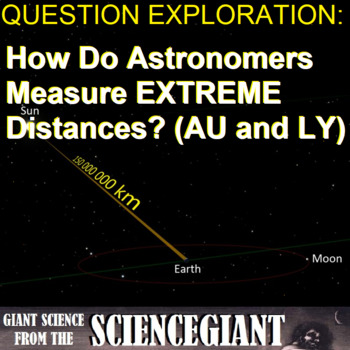
Question Exploration: How Do Astronomers Measure Extreme Distances? (AU and LY)
This Question Exploration asks the Essential Question about cosmic distances: How Do Astronomers Measure Extreme Distances? (astronomical units and light years )Question Exploration Routine is an instructional methods that teachers can use to help a diverse student population understand a body of content information by carefully answering a critical question to arrive at a main idea answer. Students taught using the question exploration routine earned higher total test scores than did students t
Subjects:
Grades:
7th - 10th
Also included in: StayGiant Earth Science Bundle: Astronomy (space exploration)

Guided Notes- Space Volcanoes
Guided notes to Space Volcanoes: Volcanic Activity in our Solar System Slides.
Subjects:
Grades:
9th - 12th
Also included in: Space Volcanoes: Volcanic Activity in our Solar System
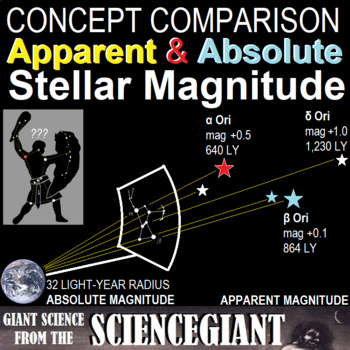
Concept Comparison: Apparent vs. Absolute Magnitude of Star Brightness
What is the stellar magnitude scale? This Concept Comparison helps Ss contrast apparent magnitude and absolute magnitude. The Question Exploration guides Ss to an explanation of why star light isn't always star bright. Included are three mathematics worksheet and one optional art activity from NASAThe Stellar Magnitude Scale: Ss learn about positive and negative numbers using a popular brightness scale used by astronomers.Star Magnitudes and Decimals: Ss work with the stellar magnitude scale to
Subjects:
Grades:
8th - 12th
NGSS:
HS-ESS1-4
, HS-ESS1-2
Also included in: StayGiant Earth Science Bundle: Astronomy (space exploration)
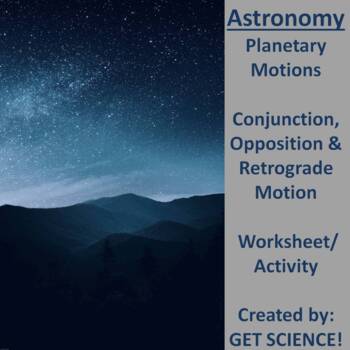
Planetary Motions: Conjunction, Opposition & Retrograde Motion
This worksheet should be used simultaneously with the free PowerPoint presentation titled "Planetary Motions". The PowerPoint walks the students through the meanings of Conjunction, Opposition and Retrograde motion. Examples, pictures and animations are used for better understanding. The planets and the Moon are used as examples and students will need to draw on a diagram to show their understanding. This lesson can be edited and the answer key is provided.The PowerPoint has animations that a
Subjects:
Grades:
8th - 12th, Higher Education
Types:

Question Exploration: What Determines the Life Span of a Star?
When Will the Sun Burn Out? Will the Sun ever blow up and kill us all? This Question Exploration helps Ss answer the Essential Question: What Determines the Life Span of a Star like the Sun?Question Exploration Routine is an instructional methods that teachers can use to help a diverse student population understand a body of content information by carefully answering a critical question to arrive at a main idea answer. The Concept Comparison Routine is used help compare and contrast key concepts
Subjects:
Grades:
7th - 10th
NGSS:
MS-ESS1-4
, HS-ESS1-3
, HS-ESS1-1
Also included in: StayGiant Earth Science Bundle: Astronomy (space exploration)

Question Exploration: What Was the Space Race? (Rocket Rivals Russia and USA)
What Was the Space Race? This Question Exploration helps Ss explain What are key events, developments and achievements in the early history of space exploration during the rocket rivalry between Russia and America? It spans from October in 1957 with the launch of first satellite Sputnik 1, to the International Space Station today.Question Exploration Routine is an instructional methods that teachers can use to help a diverse student population understand a body of content information by carefull
Subjects:
Grades:
7th - 11th
NGSS:
HS-ETS1-3
, HS-ETS1-1
Also included in: StayGiant Earth Science Bundle: Astronomy (space exploration)

Earth's Motions Bundle w/Key
This bundles includes power point presentations and scaffolded/guided notes for all lessons which include: Earth's Rotation, Earth's Revolution, and Celestial Sphere. Altitude of the Noon Sun lab/activity/investigation and Rotation Revolution Exam. Bonus: sun's path diagram worksheet which can be used in addition to the celestial sphere lesson or a springboard from the lesson. It has 15 questions following the activity. Kindly leave a review of my work, it will help me create future products.
Subjects:
Grades:
6th - 12th, Higher Education, Adult Education, Staff
Types:

Question Exploration: How Did the Moon Form? GIANT IMPACT!
What are the violent origins of the Moon? The most widely accepted scenario for the formation of the Earth–Moon system involves a dramatic collision between the early Earth and some other cosmic body, with the present-day Moon thought to have coalesced from the debris ejected by a giant impact. This Question Exploration helps Ss explore the Giant Impact Theory of lunar formation.The first FRAME is a concept comparison among our Moon Luna, Mars' moons Phobos and Deimos, and the six largest natura
Subjects:
Grades:
8th - 12th, Higher Education
NGSS:
MS-ESS1-4
, HS-ESS1-6
, HS-ESS1-4
, HS-ESS1-5
Also included in: StayGiant Earth Science Bundle: Astronomy (space exploration)
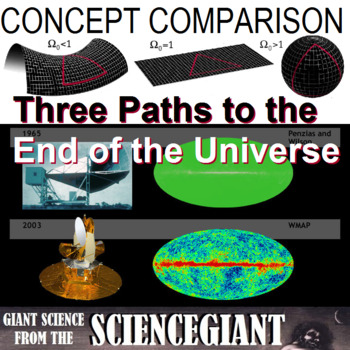
Concept Comparison: Three Possible Paths to the End of the Universe
It started with a Big Bang. But the future of the Universe is a mystery. However, there has a couple of theories based on the possible shape and omega value of the Universe. This Concept Comparison helps Ss contrast diagrams of three possible geometries of the universe: closed, open and flat; corresponding to a critical density parameter which is either greater than, less than, or equal to 1. What does it means for the end of everything in billions of years? Which bowl of physic porridge does Go
Subjects:
Grades:
8th - 12th
NGSS:
MS-ESS1-2
, HS-ESS1-2
Also included in: StayGiant Earth Science Bundle: Astronomy (space exploration)

FRAME: McElligot's Pool and The Drake Equation - Search for SETI with Dr. Seuss
Because you never can tell what goes on down belowThis pool might be deeper than you or I know!McElligot's Pool and the Drake Equation uses the fanciful imagination of Dr. Seuss and the fish in McElligot's Pool to engage Ss in the extraordinary topics of alien life and space exploration. Marco daydreams of all the possibilities that await him while he fishes in McElligot’s Pool. After a read-aloud of an abridged McElligot’s Pool, the frame routine helps Ss explain how the Drake Equation is a tho
Subjects:
Grades:
6th - 11th
NGSS:
HS-ESS1-6
, HS-PS4-5
, HS-ESS2-7
Also included in: StayGiant Earth Science Bundle: Astronomy (space exploration)
Showing 1-24 of 66 results



